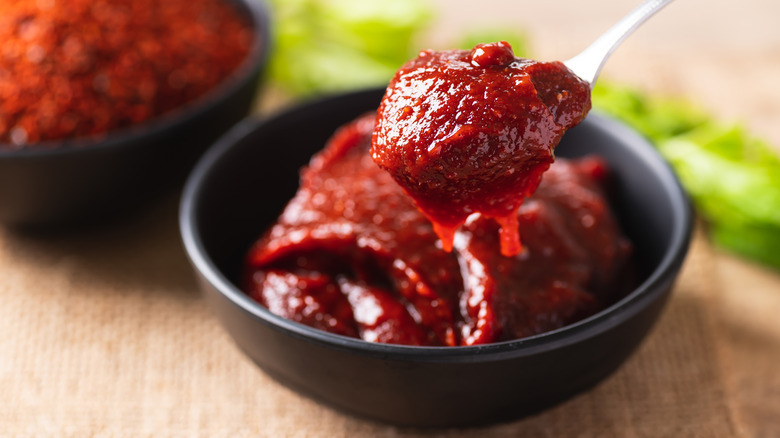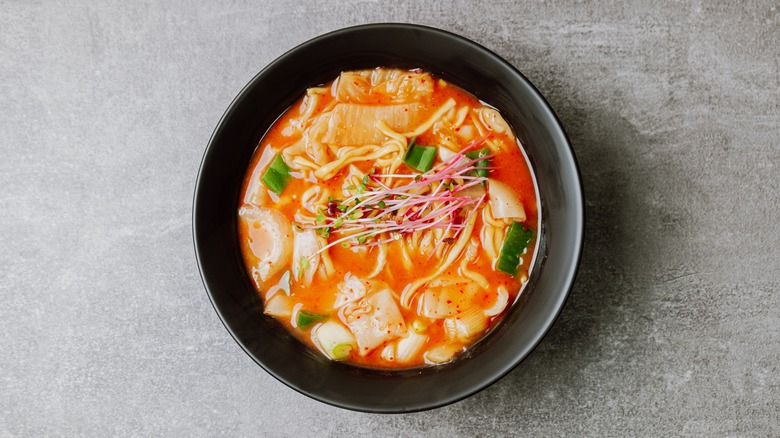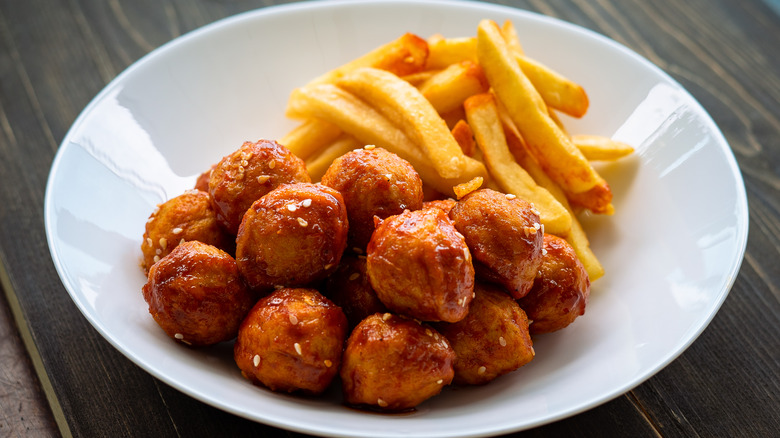A Dollop Of Gochujang Is All You Need For Elevated Soups
Soups are both classic comforts and some of the most customizable dishes of all. From creamy bowls of broccoli cheddar to classics like chicken noodle soup, the options are endless — but some choices are more mouth-watering than others.
To get a truly next-level soup, you don't need to reach for every ingredient in the pantry. Some additions are flavorful enough on their own and can elevate just about any stew on the docket. One such powerful ingredient is gochujang. This impressively spicy condiment, also known as red chili paste, is chock full of peppery flavor that makes it a staple in Korean cooking. It's made up of unique ingredients like red chile flakes, fermented soybeans, glutinous rice (also known as sticky rice), and salt, among other things — think of it like a very thick hot sauce. These rich combinations make for an especially thick crimson paste packed with layered flavors, from an innate sweetness thanks to the starches of the sticky rice, to its signature spice from the chile flakes.
Since gochujang is so concentrated, it's an especially flavorful choice to put inside of soups. Even just a dollop can elevate a pot, infusing otherwise bland bowls with complex flavor. Here's how to use it.
How to elevate your soup with gochujang
Gochujang is a big flavor enhancer, but before adding it to your favorite soup, remember to consider whether the flavor profiles will be complimentary first. Gochujang doesn't go with just anything, but it would do well in dishes like a flavorful tomato soup, or a classic chicken noodle. These otherwise typical dishes leave space for a concentrated ingredient, like gochujang, to shine. Another popular soup that uses this paste in Korean cooking is the flavorful gochujang jjigae, which is a stew made with vegetables, potatoes, and pork.
Complimentary flavors aside, remember that all good things should be used in moderation. As previously mentioned, gochujang is a very concentrated ingredient, so a little goes a long way. Be diligent about tasting your soup while adding it to the pot to make sure you're getting the ideal balance of those complex flavors.
A final important thing to remember when buying gochujang is that the spice level of this paste varies per brand, so make sure to check the packaging before you purchase to properly satisfy your palette. Gochujang can be found in the Korean market or online, but it is becoming more widely available in grocery stores as it rises in popularity. So, if you like this addition to your soups, you might want to grab another container to try it in a few other recipes, too.
Other ways to elevate dishes using this popular paste
Just like with soup, gochujang is a very versatile additive. If you've tried it in your favorite stew, keep in mind that it also does wonders in a whole lineup of other dishes.
Gochujang brings its desirable umami profile to anything it touches and is a great ingredient to use to bring depth to a meat marinade. Mix it into a glaze with other ingredients to use for a hearty pork bulgogi, or spread it onto some ground beef for spicy Korean-style meatballs. This paste also brings that same flavor-elevating benefit to any sauce it's added into, from dipping sauces for summer rice paper rolls to classic condiments like mayonnaise to use to slather onto sandwiches. Finally, to make your salad a little more interesting, you could even mix some gochujang into a dressing for fiery flavors. From vinaigrettes to creamy ranches, anything goes.
If you haven't yet, give gochujang a chance to shine in your kitchen. There's a reason it's such a staple in Korean cooking — it's just that good.


